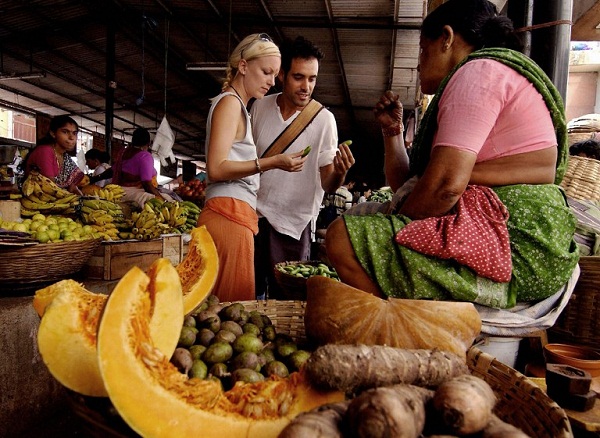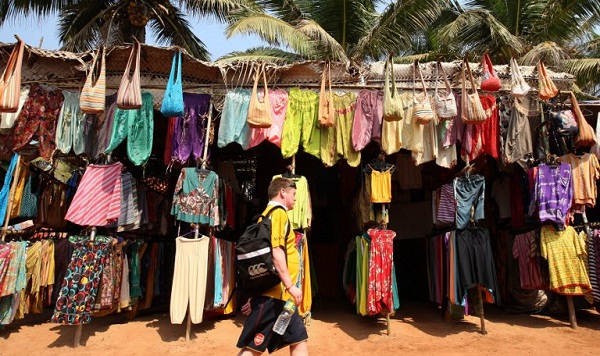
Tourism has a benign face of being merely an exchange between people travelling to each other’s lands. But given the world order, this is not an equal exchange. Everyone, the world over, does not have equal possibilities of travel and of spending on travel. There are gender, race, caste and class dynamics at play. Women working in the tourism sector, be they first world women in third world countries or women from third world countries itself, have experiences different from men working in the sector. Again, within women, the experiences of vulnerability of First World women as women in Third World countries, even where they work in lead positions, are different from those of women engaged in contract housekeeping or reception work in the tourism sector. Also, women from host countries and women tourists have different experiences from their male counterparts.
So, can Gender Parity 50:50 be achieved through tourism? ‘Planet 50:50 by 2030: Step It Up for Gender Equality’ was the theme for 2016 Women’s Day. According to the UN, this theme was conceptualised to consider how to accelerate the 2030 Agenda, with 17 Sustainable Development Goals, which world leaders adopted in September 2015 at a UN Summit, and which are sought to be reached through 169 targets. Take this 2030 agenda which cites tourism as the avenue for the attainment of sustainable development goals and mix it with the UN Declaration of 2017 as the International Year of Sustainable Tourism for Development, and you have an insipid concoction in which you neither get the taste of a people-centric tourism nor do you get the taste of women’s rights or gender parity.
Goa has widely been known as a tourist paradise for a long time. Being a Goan based in Goa, one is, in a sense, at a good vantage point from which to decipher what these themes of Women’s Day 2030 Agenda and of the 2017 International year, can signify. This means that one may want to look at what gender parity has been achieved so far through the State’s tourism policy and the practices of the dominant tourism industry.

A fruit vendor at the local market in Old Goa. AFP
One would like to go back to about two and a half decades ago when a five-star hotel with a tie up with a multinational chain was holding up its woman director as a sign of gender parity. They had a woman director at a time when it was not yet compulsory as it is now under the Company Act to have at least one woman director on the Board. She was not a paper director, as in some companies where women family members are introduced as directors, to keep the stranglehold of the male patriarchs of the family on the company. But this had meant nothing in terms of parity in staff distribution in various other positions. The housekeeping department was flooded with women while the chef and kitchen were primarily male. On the other hand, civil society groups that were protesting the denial of people’s access to the beach by this five-star hotel were heard mumbling about stripping the powerful woman director naked as a symbol of their protest. There wasn’t gender parity in this either. Clearly, they were taking advantage of a certain vulnerability she had as a woman. Yet, the groups were also raising some gender concerns, even if they were not styled as such. For instance, the women residents of the locality and its neighbourhood were talking about being denied the opportunity of learning how to swim at this quiet, shallow beach. Some were talking of being denied access to spaces from which to derive their livelihoods.
Thus, it wasn’t an all sides clear picture then, and this picture hasn’t changed substantially now. Women's fight for gender parity is caught in crossfires precisely such as this. It isn’t simply an issue of 50:50. What would 50:50 be in a situation where all the resources of the community are plundered by mega-corporates leaving nothing to be shared/divided 50:50? What would 50:50 share in housework be where both men and women have to put in long hours of work for dismal salaries that cannot even enable them to keep a domestic help or have socialised housework amenities? What would 50:50 be for the domestic help who does not even get a day off each week? These are the burning questions we perforce need to ask when we talk of 50:50. It cannot be a superficial talk of bland equality.
The struggle for matrimonial property is being waged in the country. There, of course, has to be gender parity with matrimonial property. But what happens if a couple has nothing to divide into half? If all the properties they tilled and tenanted have been snatched by subtle corrupt processes - processes that have been provided a lot of leeway in the administrative justice system? If all the properties they tilled or tenanted have been perforce acquired in the name of development for some measly government compensation and are now being utilised for some version or the other of tourism? Be it golf courses, be it DefExpo? (Defexpo India is a biennial Land, Naval and Internal Homeland Security Systems Exhibition, the eighth edition of which is scheduled to be held at Quitol, South Goa end March 2015, even as there are designs to make it a permanent destination for the Expo)
Similarly, the fight for parity at the workplace is raging in the country. But this is a fight which cannot be limited to fighting for 50:50. It is about establishing systems that will ensure that women are not discriminated against or harassed at the workplace. A fight against discrimination that happens in ways that are subtle. So 50:50 must mean that women must have the possibilities of occupying 50% of every position in an establishment. How then can the Sustainable Development Goal No. 8, namely, “promote sustained, inclusive and sustainable economic growth, full and productive employment and decent work for all” be said to be achieved, with a target to “devise and implement policies to promote sustainable tourism that creates jobs and promotes local culture and products?”

A stall near Anjuna beach in Goa. AFP
The UN World Tourism Organisation website itself says that women tend to be concentrated in the lowest paid and lowest status jobs in tourism, and further that women perform a large amount of unpaid work in family tourism businesses. While the case studies in the UN World Tourism Organisation’s ‘Global Report on Women in Tourism 2010’ primarily relate to women entrepreneurs, its recommendation on women in tourism employment speaks a thousand words. The Report recommends increased awareness of the important economic role that women play in the tourism industry, the strengthening of legal protection for women in tourism employment; such protections include minimum wage regulations and equal pay laws, improvement of maternity leave requirements, flexible hours, work-from-home options, and arrangements of child-care. None of these recommendations are any different from those for corporate units with regard to any industry that functions under the benign name of development and providing employment. This is stated to flag that what goes on in tourism employment is often masked under the glamorous face of tourism.
What also tends to get overlooked is that there is an increasing contractualisation of labour and labour laws including maternity benefits and flexi-timings cannot get enforced for contract labour. So even if a large number of women are ‘employed’ in tourism, the question is how. Can there be gender parity in the face of despair and inequality in the very polity and economy, where even hard won labour laws are taking a back seat, with the increasing contractualisation of labour?
Studies in Goa have indicated that women entrepreneurs who imagined they would benefit from the tourism industry express anguish that the dominant players, such as multinational hotel chains, which have a powerful alliance with Governments anywhere, try to push small and medium enterprises, generally run by women, out of business. This they do by setting up their own businesses such as the beauty parlours, within the premises’ precincts and making that part of the charter tourism package.
Also, talk of investment in cultural tourism must look at gender parity. We cannot have the Sustainable Development Goal of Gender Equality being outdone by any of the other Sustainable Development Goals or vice-versa. For instance, we cannot have the Sustainable Development Goal No. 12 of ensuring sustainable consumption and production patterns be met by a target where sustainable tourism is automatically presumed to be a driver for job creation and promotion of local culture and products. Considering that the goal is sought to be attained on the backs of women with women and their living culture being commercialised and commodified, thereby robbing women, including indigenous women of their moorings. There are ample examples again in Goa. A cultural colour throwing exercise at Carnival with satirical plays as an expression of protest and gay abandon of established norms, got quickly converted for tourism into a cultural floats bonanza coupled with an image of Goan women being available. This year, it even metamorphosed into a dress code dictated non dissenting expression Carnival parade.
Therefore, the hard questions indeed need to be asked, about decent work in tourism, trade opportunities in tourism, ecotourism, cultural tourism, and which women exactly benefit from this tourism. All this, before jumping on to the bandwagon of tourism industry for being the solution for sustainable development and offering gender parity 50:50.